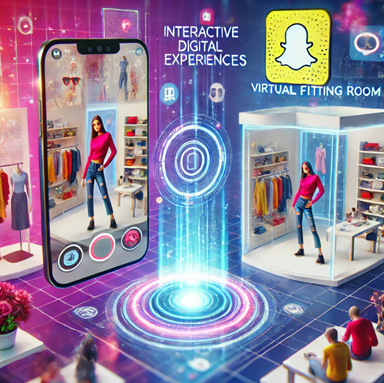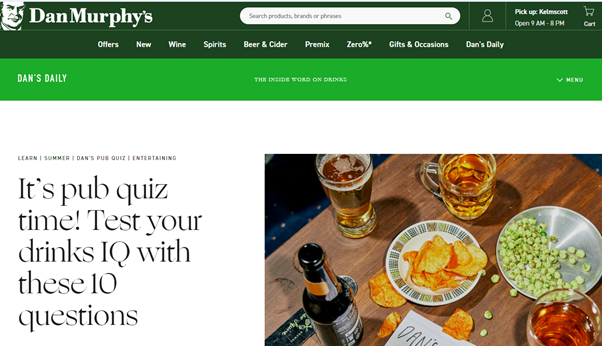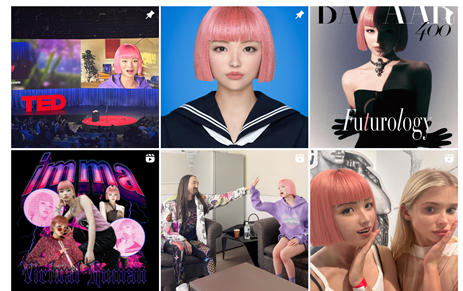Jul18 2024
Growth Marketing Tactics (2024 Edition)
In the rapidly evolving digital landscape, staying ahead of the curve requires more than just traditional marketing strategies. The importance of leveraging advanced growth marketing tactics cannot be overstated.
Let’s take a quick look at some of the latest tactics in Growth Marketing!

Search Engine Optimisation
Search still matters, a lot! Here are the must dos for your website in 2024.
Content Strategy: Your content engine should regularly produce articles, blogs, and pillar pages (authoritative, content-rich pages) that target key search terms.
Local SEO: Optimise for local search by maintaining your Google My Business profile and incorporating local keywords and location-specific content on your site.
Mobile-First Indexing: Ensure your site is optimised for mobile devices, as Google primarily uses the mobile version for indexing and ranking.
AI-Generated Content: Leverage AI tools to automate creation of mid-tier content focused on long-tail keywords.
Future Focus: Prepare for optimisation with large language models (LLMs) like ChatGPT to stay ahead.

Voice Search Optimisation
The rise of smart devices and digital voice assistants at home, coupled with increased voice searches on mobile devices, is changing how people search online.
It is estimated that around 20-25% of mobile searches on Google are conducted through voice search. Voice searches often mimic natural, conversational speech, utilising longer-tail keywords.
For example:
Voice Query: "Show me some of the best optometrists in Perth in my area open now."
Typed Query: "Best optometrists near me."
Ensure your website content answers these conversational questions directly.
Over a quarter of voice searches in 2024 were conducted on mobile devices, frequently involving local area searches.
Interactive Digital Experiences
Interactive digital experiences are transforming how businesses engage with their audiences. By incorporating interactive elements like quizzes, surveys, and interactive videos, businesses can provide more dynamic and personalized user experiences.
Quizzes and Surveys: Engage users by offering immediate feedback, scores, or personalised advice based on their responses. This can lead to higher engagement and valuable insights into customer preferences.
Interactive Videos and Infographics: These allow users to engage directly with content, creating a more immersive experience. For example, clickable videos where users can choose their journey or infographics that reveal information as they scroll.
AI-Powered Chatbots: Real-time assistance and personalized interactions are possible with AI-powered chatbots. They can answer queries, guide users through purchasing decisions, and provide tailored content, enhancing customer satisfaction and streamlining customer service.
Virtual Tours and Try-Ons: Virtual tours can bring a store or event to life online, while virtual try-ons allow customers to see how products like clothing or accessories look on them before purchasing. This not only enhances the shopping experience but also reduces returns.
Innovative Examples
Snapchat AR Lenses: Snapchat’s augmented reality (AR) lenses are a prime example of how brands can use AR to engage users. These lenses allow users to try on products or interact with branded content in real-time, offering a fun and immersive experience that drives brand interaction.
Virtual Fitting Rooms: Retailers like ASOS and Gucci are at the forefront of using AR for virtual fitting rooms. These digital tools allow customers to virtually try on clothes and accessories, providing a personalized shopping experience that mimics the in-store experience but from the comfort of their own homes.

User and Influencer Generated Content
User and influencer-generated content plays a crucial role in building brand credibility and expanding reach. When customers and influencers share their experiences and engage with your brand, it not only enhances visibility but also fosters trust and authenticity. This type of content, whether it’s from everyday users or trusted influencers, serves as powerful social proof, encouraging others to explore and engage with your products or services.
Word of Mouth: Leverage the power of word of mouth by encouraging users to share their genuine experiences with your product. Authentic testimonials from real customers can significantly amplify brand awareness, as people tend to trust recommendations from peers.
Authentic Influencer Relationships: Foster long-term relationships with influencers who genuinely believe in your product. Authenticity is key; when influencers truly support what they’re promoting, their endorsements feel more trustworthy and resonate better with their audience.
Influencer Commerce: Go beyond simple promotions by collaborating with influencers to co-create limited-edition products or unique experiences. This approach not only boosts sales but also deepens the connection between the influencer, your brand, and their followers, creating a sense of exclusivity and shared value.
Virtual Influencers - the future?
A Virtual Influencer is a computer-generated character designed to engage with audiences on social media platforms. These AI-driven personas are often crafted by brands or creators to act as consistent and controllable brand ambassadors, interacting with followers, promoting products, and building a loyal fanbase—without the unpredictability of human influencers.
https://www.instagram.com/lilmiquela has 2.5M followers..




